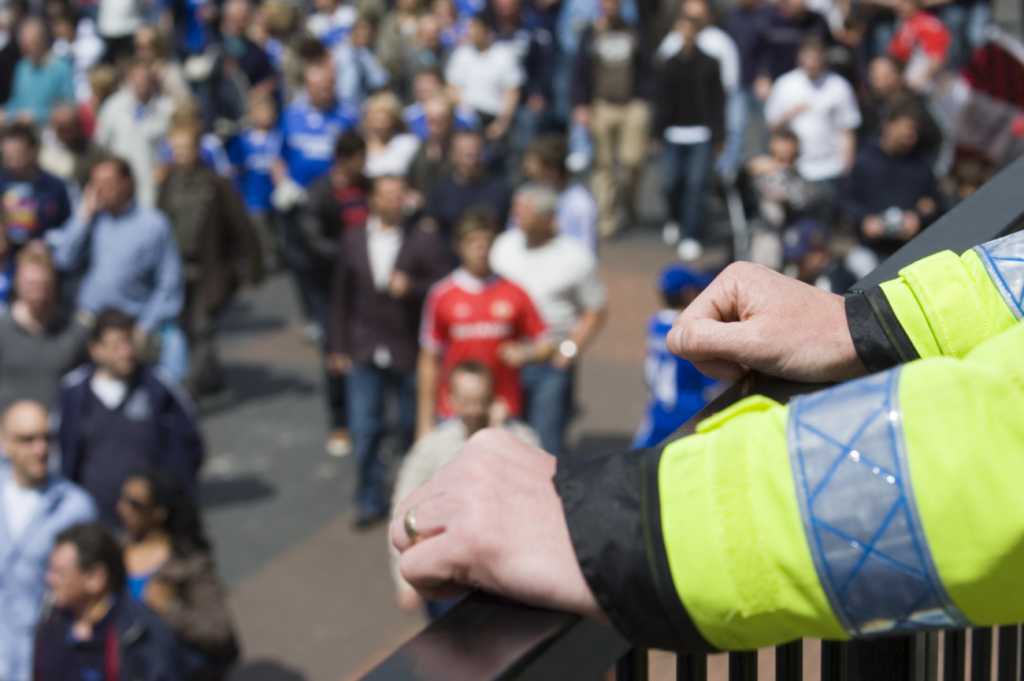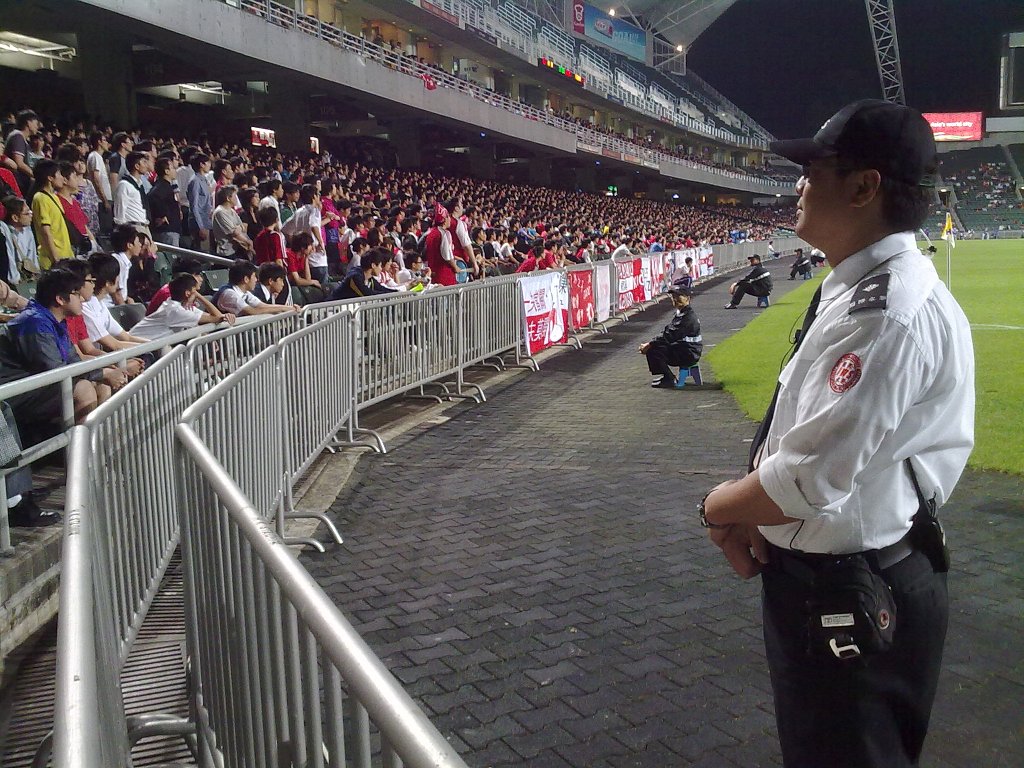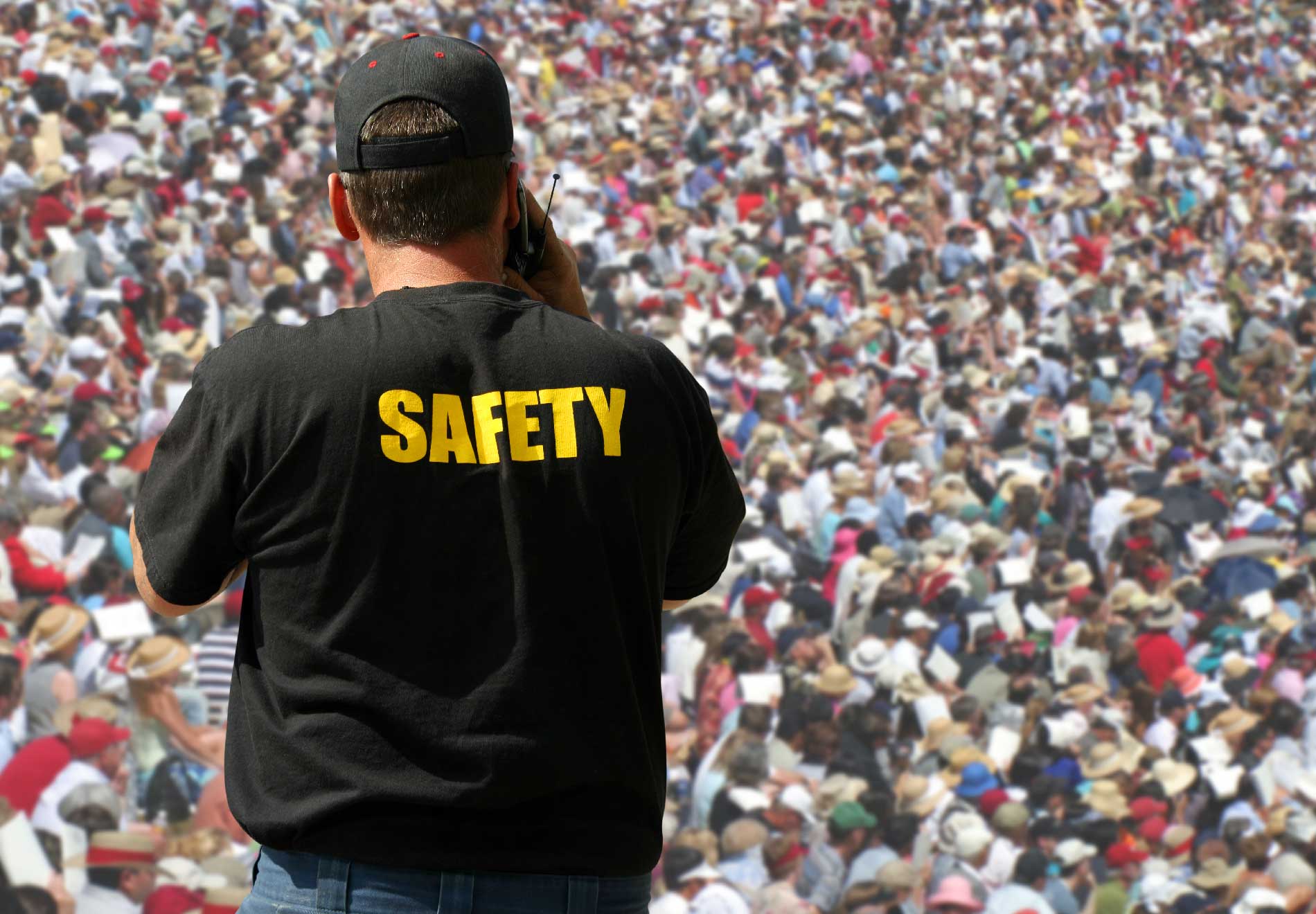Sports tournaments are known for being high-energy but also high-risk crowd events. There’s nothing like a healthy rivalry to bring people together for a common cause, team building, or just for the sake of competition.
However, for event planners, planning a sporting event is a whole different ballgame. It has its own set of specific factors and intricate procedures that, if left unchecked, can quickly spiral out of control. Make sure you are ready for any unforeseen issues by using crowd control products like the ones found here to manage large to medium crowds.
All attendees, including employees, volunteers, and members of the public, have a duty to ensure that health and safety risks are adequately handled.
When walking around an empty venue, this might not seem like a problem; but it doesn’t take long for problems to arise once a crowd forms. And anything is likely to go wrong in a big crowd.
Do you have a thorough plan for your sports event? If not, don’t worry! We’ve compiled a list of crowd control strategies that will help you prevent a fiasco at your event.
Why is crowd control a necessity?

When met with a large group of random people, people behave differently. Joy, rage, and excitement are all powerful emotions that can easily spread and become dangerous. Property damage, personal injury, and even violence can result from a poor lack of crowd control.
Tips for effective management of crowds
1. Know your audience
A sporting event would undoubtedly draw a diverse audience of people of various ages (presumably, anyway). As a result, it’s critical to understand the type of audience you’ll be entertaining – their general attitude, preferences, and justification for attending.
Knowing your audience will help give you an idea of how they might act in a crowd.
2. Avoid last-minute planning

The way you handle crowds at your sports event should be seen as part of the planning phase. You should start planning how people can travel around once you’ve chosen a location.
Planning audience access to public locations like ATMs, public bathrooms, and sports jerseys are just a few of the small details that make sports event management special. Making a list of all the locations to be managed will make implementation much easier.
There should be multiple access points to each of these public areas at your event, each of which should be managed by well-trained personnel. Make sure you have complete command at all times.
3. Inform and have the emergency contacts on standby
Once you know when and where your sporting event will occur, you can begin contacting anyone who will be ready to help in case of an emergency.
Be sure to get in touch with the following people:
- Emergency services like the local police, fire management, etc.
- Event and venue contractors
- Local authorities
- Local businesses
Include them in the planning phase, and work with them to determine the best arrangement for crowd movement through the venue and any potential difficult points.
4. Assess possible threats
Identify possible threats and devise a strategy for keeping people away from them. All staff and personnel should be on the lookout for suspicious activity in addition to the usual bag checks and body scanning.
The following are examples of unusual conduct that should be reported to management:
- Staring at the staff all the time
- Lack of participation in event events or feigned interest
- Examining the layout of the venue
5. Emergency plans are a must

Even if you’ve carefully planned the event, problems can arise. That’s why you should always have a backup plan in case anything goes wrong.
Always be prepared for the following worst-case scenarios:
- The weather abruptly shifts.
- Items that are flammable catch fire.
- A brawl breaks out among the attendees.
- Somebody has been caught stealing.
Figure out how to handle these scenarios, so you don’t lose control if they occur.
Staff training and preparation make a significant change when there are huge crowds involved.
If there is an audience member in great need of medical help, you must plan how to react.
Since medical professionals may not be around on time, employees can help or even save someone’s life. It is highly recommended to have your staff certified in Basic Life Support (BLS) because it doesn’t take much of their time but it matters in emergencies. Life-saving courses such as this one can be done completely online with a certification accepted worldwide.
6. Use signage and demarcate areas
If you use proper event signage, attendees will find their way around very quickly.
Use large signs for:
- Queues for registration
- Washroom
- Areas where people can smoke
- Staff-only areas
- Fire exits
To indicate where people can queue for tickets and registration, use barricades, cones, ropes, etc. Make it clear where the main event will take place and set aside the areas that are permissible and non-permissible to the attendees.
7. Hire the right number of staff and security

Make sure you’ve recruited the correct number of people concerning the expected crowd size. The venue should be familiar to everyone on your staff.
It’s critical to have a clear line of communication between team members within the venue, particularly if crowds become difficult to handle.
Develop a common vocabulary and protocol that will be followed. You’ll need to know who’s calling, where they are, and what their problem is in the event of an incident.
Place the workforce in all these locations:
- The entrances
- Lines for check-in
- Ticket sales windows
- Seating areas
- Support/help desks for attendees
Sports events typically require the hiring of a third-party security company that can deal with large crowds, frenzied behavior, and potentially dangerous situations. The guards you employ should be able to handle the following conditions:
- Attendees being screened for contraband.
- Putting an end to heated arguments
- Being in touch with the emergency services
When your sporting event is over – whether it was an evening, a weekend, or a season – fight the urge to leave. Reviewing how the event played out for the team is just as critical as the original preparation. Examine which strategies performed well and which could be changed for later.
Summing Up
Your primary duty as the host of a sporting event or tournament is to ensure everyone is safe. Getting many teams and their fans together for some friendly competition is always a fantastic strategy for team building, etc.
However, you must ensure that you know how to manage crowds and keep everyone safe and comfortable.
When these guidelines are followed carefully, you’ll be able to schedule and execute a positive sports competition that checks all the boxes.
The more time you spend organizing and training, the more smoothly the day will go – and the more time everybody will have to enjoy it safely!







